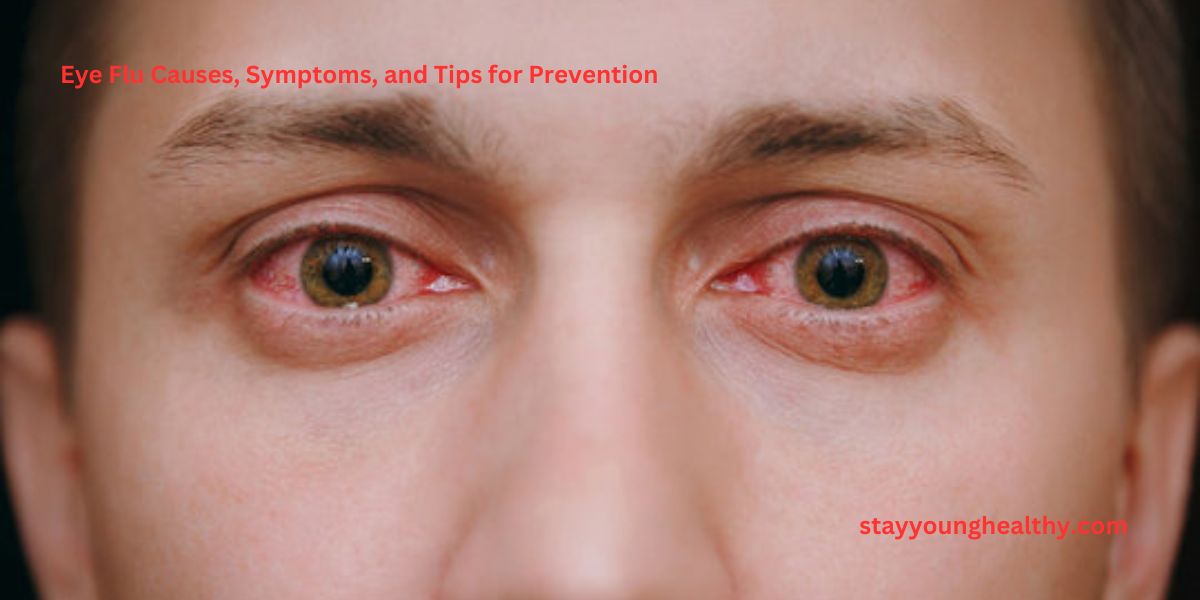Eye flu, also known as viral conjunctivitis or pink eye, is a highly contagious eye infection that affects millions of people worldwide. It is characterized by inflammation of the conjunctiva, the clear membrane that covers the white part of the eye and lines the inner surface of the eyelids. This condition can cause discomfort, redness, itching, and discharge from the eyes. Understanding the causes, symptoms, and prevention strategies for eye flu is crucial to maintaining good eye health and preventing its spread.
Causes of Eye Flu
Viral infections are one of the most common causes of eye flu due to adenoviruses. These viruses can easily spread from person to person through direct contact with infected eye secretions, contaminated objects, or respiratory droplets. Other viruses, such as herpes simplex virus, can also lead to conjunctivitis. Bacterial infections and allergies can sometimes mimic the symptoms of eye flu, making accurate diagnosis and treatment essential.
Symptoms of Eye Flu
Usually, eye flu symptoms are visible from the very beginning as it occurs. Here are some common symptoms of eye flu:
- Redness and Irritation – One of the hallmark symptoms of eye flu is redness and irritation of the eyes. The conjunctiva becomes inflamed, giving the eyes a pink or red appearance.
- Watery Discharge – Excessive tearing and watery discharge are common in eye flu. This discharge can be clear or slightly thick and can cause the eyelids to stick together, especially upon waking.
- Itching and Burning Sensation – The eyes may feel itchy and burning, leading to discomfort and a constant urge to rub the eyes.
- Foreign Body Sensation – Individuals with eye flu often report feeling as if there is a foreign body, such as sand or grit, trapped in their eyes.
- Light Sensitivity – Sensitivity to light, or photophobia, is another symptom. Bright lights may exacerbate the discomfort and irritation.
- Swelling of Eyelids – Swelling of the eyelids can occur due to the inflammation of the conjunctiva, giving a puffy appearance to the eyes.
- Discharge – Yellow or green discharge, especially if accompanied by crusting of the eyelids, may indicate a bacterial infection alongside the viral infection.
- Vision Changes – While vision or eyesight changes are rare in eye flu, they can occur if the cornea, the clear front surface of the eye, becomes affected. This might cause blurred vision or halos around lights.
Tips for Prevention
Eye flu can happen to anyone. However, you can prevent yourself from getting eye flu or take proper care of yourself by following preventive tips if it occurs to you: Here are some simple but effective tips for you:
- Maintain Good Hygiene – Regularly wash your hands with soap and water for at least 20 seconds, especially after touching surfaces or objects that may be contaminated. Avoid touching your eyes, nose, and mouth with unwashed hands.
- Avoid Sharing Personal Items – Do not share towels, pillowcases, makeup, or eye drops with others to prevent the spread of infection.
- Practice Respiratory Etiquette – Cover your mouth and nose with a tissue or your elbow when sneezing or coughing to prevent respiratory droplets from reaching your eyes.
- Disinfect Frequently Touched Surfaces – Clean and disinfect surfaces such as doorknobs, remote controls, and smartphones regularly, as viruses can survive on these surfaces for hours.
- Use Personal Protective Equipment – If you are caring for someone with eye flu, consider wearing gloves and a mask to reduce the risk of exposure.
- Avoid Contact Lenses – While experiencing eye flu symptoms, it’s best to avoid wearing contact lenses, as they can exacerbate discomfort and delay healing.
- Seek Medical Advice – If you suspect you have eye flu, consult a healthcare professional for proper diagnosis and guidance. They can help determine whether it’s viral, bacterial, or allergic conjunctivitis and recommend appropriate treatment.
- Follow Treatment Guidelines – If prescribed antiviral or antibiotic eye drops, use them as directed by your healthcare provider. Follow their advice for hygiene and eye care.
- Practice Self-Care – Apply a clean, warm compress to the eyes to relieve discomfort and help loosen any crusts. Avoid rubbing your eyes, as it can worsen irritation.
- Stay Home – If you or your child has eye flu, it’s essential to stay home from work, school, or other activities until the symptoms improve. This prevents spreading the infection to others.
Conclusion
Eye flu, with its distinctive redness, itching, and discomfort, is a common eye infection caused by viruses. Practicing good hygiene, avoiding close contact with infected individuals, and following preventive measures can help reduce the risk of contracting and spreading eye flu. While it typically resolves on its own within a week or two, seeking medical advice and adhering to treatment guidelines is essential to ensure a speedy recovery and minimize potential complications. By staying informed and taking proactive steps, individuals can safeguard their eye health and contribute to preventing the spread of eye flu within their communities.
